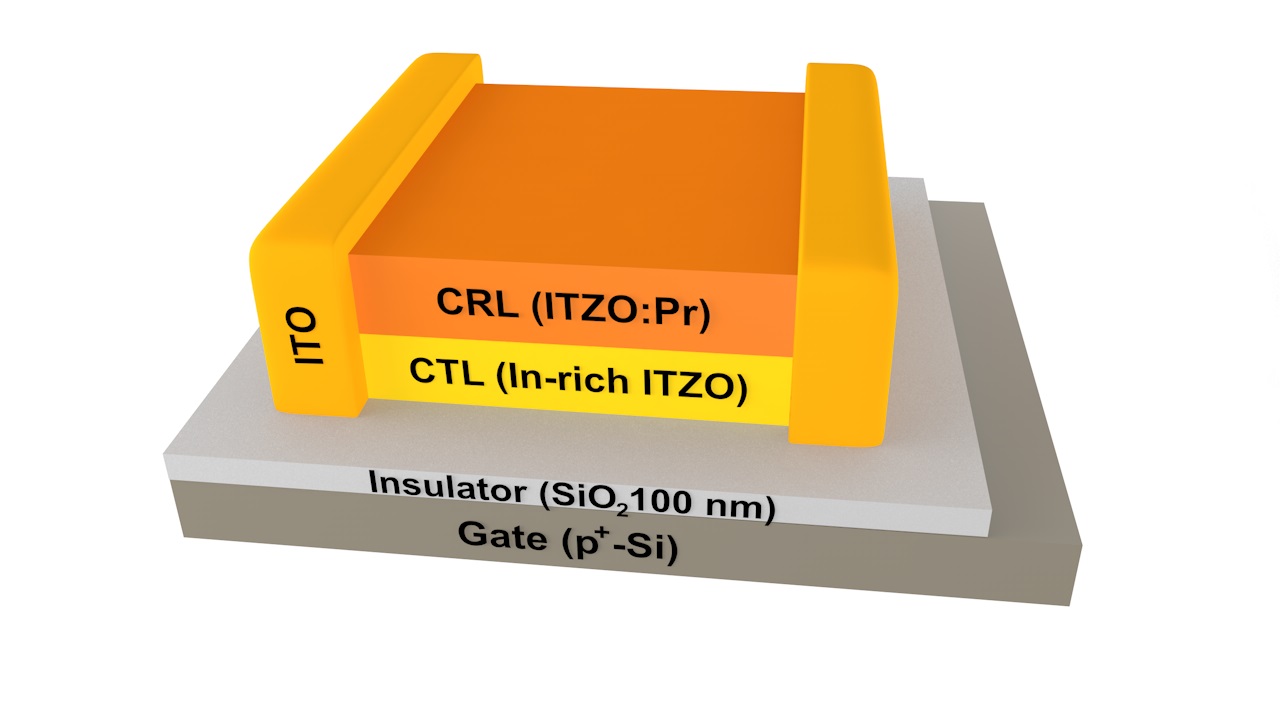A research group led by Prof. CAO Hongtao at the Ningbo Institute of Materials Technology and Engineering (NIMTE) of the Chinese Academy of Sciences (CAS), in cooperation with the research groups at Sun Yat-Sen University and relevant enterprises, has proposed a novel charge transport/charge relaxation bilayer device structure, achieving oxide thin-film transistors (TFTs) with both sound mobility and stability. This work was published in Advanced Science.
Due to the advantages of relatively high mobility, large-area uniformity, and low off-state current, amorphous oxide semiconductor thin-film transistors (AOS TFTs) have been widely used in commercial displays. The rapid development of display technology, like large-area display panel, super hi-vision and ultrahigh frame rate, is indispensable for developing high-performance TFTs. However, combining the high mobility with the excellent stability still remains challenging in the TFT research community, limiting their applications in smart vehicles, telemedicine, distance learning, augmented reality (AR) or virtual reality (VR), and so on.
To address this issue, the decoupling scheme between the mobility and stability was put forward by virtue of a bilayer device structure design.
The charge transport layer (CTL) consists of indium-rich InSnZnO, featuring large average effective coordination numbers for all cations and abundant edge-shared structures to promote the mobility. Besides, the thickness of CTL no less than 20 nm allows large-area uniformity deposition, contributing to good positive-bias temperature stress (PBTS) stability.
On the other side, the charge relaxation layer (CRL) is made of praseodymium-doped InSnZnO, which can significantly shorten the photoelectron lifetime, facilitating the negative-bias illumination stress (NBIS) stabilization.
According to the theoretical calculations and experiments, the developed CTL/CRL bilayer TFTs possess ultrahigh mobility (μsat >40 cm2 V-1 s-1) and excellent NBIS/PBTS stability (ΔVth =-1.64/0.76 V).
This strategy has provided a promising route to resolve the mobility-stability conflict for high-end displays, promoting the further TFT-related research and development.
The work was supported by the National Key Research and Development Program of China (No. 2021YFB3600701), the National Natural Science Foundation of China (No. 62274167), the Key deployment project of the Chinese Academy of Sciences (No. ZDRW-XX-2022-2), etc.

Fig. The schematic diagram of the CTL/CRL bilayer TFTs. (Image by NIMTE)
Contact
CAO Hongtao
Ningbo Institute of Materials Technology and Engineering
E-mail: h_cao@nimte.ac.cn

